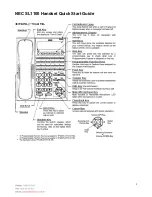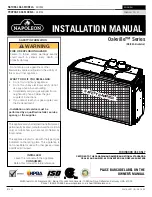
The active filter functions affect the outputted measured values. It is not possible to
recalculate the original measured values from the filtered output values.
3.4.8.1
Fog filter
The fog filter enables the device to eliminate unwanted echoes at close range. This
considerably lowers the probability of false activations at close range in fog.
Figure 16: Without the fog filter: objects are
difficult to detect through the fog due to reflec‐
tions.
Figure 17: Using the fog filter: objects can be
detected reliably because unwanted echoes
are screened out.
3.4.8.2
Echo filter
The echo filter screens out unwanted measurement data and signals caused by edge
hits, rain, dust, snow and other ambient conditions.
You can set whether the first, the last, or all three echoes are output.
The other pulses triggered by undesirable ambient conditions are not taken into
account.
Echo 1
Echo 2
Figure 18: Without the echo filter: The device
receives unwanted echoes from ambient con‐
ditions such as rain.
Echo 1
Echo 2
Figure 19: Using the echo filter (setting: last
echo): the device screens out unwanted ech‐
oes from ambient conditions as per the set‐
tings chosen.
3.4.8.3
Particle filter
The particle filter blanks small, irrelevant reflection pulses in dusty environments and
in rain or snow which are caused by dust particles, raindrops, snowflakes or the like. In
doing so, successive scans are continuously evaluated in order to detect static objects.
PRODUCT DESCRIPTION
3
8023051/1AZG/2021-05-10 | SICK
O P E R A T I N G I N S T R U C T I O N S | LMS1104C-111031S01
19
Subject to change without notice
















































